1955 New York Canoe Club International Challenge Cup
A challenge for the New York C.C. Trophy was planned for 1955. The team was to be four sailors, who would travel to the USA on the Mauretania at a cost of �149 10s for the return trip. The team for the NYCC Trophy challenge was selected as Bill Kempner, Ron Head, John Stothert and Graham Goodson, with Alan Emus as a reserve. They were all sailing new Uffa Fox canoes except Ron Head who was sailing a 'Manana II', which were fast in a blow but perhaps not so fast in very light weather. All the finishing positions to count, unlike all other challenges where only the first to finish counts.
Ron Head remembered: "The day before the races we had watched the U.S. trials. Their method of starting was to reach down into the line fast, arriving at the distance mark as the gun went and then coming direct onto the wind. It seemed fast and we were a little apprehensive as they seemed to know what they were about. However, to our astonishment, the racing committee settled on a reaching start. The course was unknown to us before going afloat or we should have protested. We were given verbal instructions when we reached the committee boat. In the start, which was very ragged, John was first over then Joey, then myself to windward, K52,US71,21,56 and last about 35 seconds late, Bill (K46) having mistimed.
"I bore away slightly for more speed and passed Joey and John. Then looking around to observe the race, I saw Graham in the act of luffing out Lou who had been worrying about his team mates behind and was just not looking where he was going. There was contact and Lou retired. Joey had dropped back a little and Graham passed him about 1 1 / 2 boat lengths to leeward. He then squeezed up to windward and despite the warning shouts of Frank and Adolf, Joey blundered on in his innocence and sat on Graham's wind. Graham luffed sharply and out went Joey.
"On the next leg, to windward, Frank went extremely well and had passed John and was gaining on me until, just before I rounded the weather mark, he tacked sharply and capsized, by sitting on a sliding seat which wasn't there. John got passed him and although Frank was very quick righting his boat, the wet ruined the set of his sails and he was no more danger for that race. Meanwhile Graham and then Bill sat on Adolf and generally gave him hell. He passed then both eventually but too late to be any danger to John and me. Towards the finish of the race, place s were still the same but on the third beat when I looked round the Americans seemed a little closer to John and I hung back in case help were needed. Anyway John stayed ahead and the race was ours easily.
"One thing Bill and Graham learned during the race was that if threatened by a boat with pole tiller steering and cleated sheets, the best method of defence was to luff and bear away alternately. If the bearing away was sharply done, as the American tried to follow suit his cleated sails nearly knocked him down and he would loose a boats length. This can be carried on indefinitely until he gives up the attack and goes off alone.
"As I recollect, tide and wind variations played little part in this race. I recall looking for a windward setting ebb current on the second or third beat when by the clock the tide should have turned. It had not in fact and I can only assume that the wind direction caused a longer flood in the same manner as a north wind affects the North Sea tides.
For race two, �We had planned that at the start we should employ the antibarging rule to squeeze out the usual type of American reaching and luffing start. Graham and I were to come at the starboard end of the line close hauled and as near to the mark as we could manage. The other two were to try something different. In the event Graham and I approached as planned in line astern, the object being to force the reaching boats to go under the sterns of two boats. We succeeded in doing this but a strongish tide was flowing, carrying us back from the mark, and we left sufficient gap for any competent starter to have taken advantage. I think the previous day's efforts had left them somewhat chary of approaching Graham's weather! John started on port well up the line with the gun and we were able to let him get across our bows and get well away. Bill started further back. Anyway we had the start buttoned up - order I think 1,2,3 and 6.
"On the beat to the first mark, John kept well ahead. Frank Jordaens passed Graham and came up on my weather quarter near the mark, causing me to overstand and round after him, 3rd. Lou also came up.
"On the first broad reach, we couldn't see the buoy at first and John led Frank below the proper course. When we did sight it, being to weather I was able to go into the lead with John second, Frank third and Lou fourth. Frank and Lou passed John and spent the next round chasing me. I found to my relief that I could go as fast to windward and even go away slightly down wind.
"On the last beat, the order was myself, Frank, Lou, John, Graham, Joey, Adolf and Bill. Graham made Joey overstand a very long way, so when they tacked for the mark it was almost a broad reach. Adolf and Bill also overstood, Adolf forcing Bill. On the last leg but one a tug and string of barges passed between Lou's stern and John's bow. John tried to get round in front but was becalmed and the tug altered course just enough to make it impossible for him. When he went back to go astern of the string, about a quarter of a mile long, he found himself at the back of the fleet.
"Meanwhile Frank and Lou having followed me onto the last leg of the course gave up chasing and waited for the rest of the race to come up. They had not yet seen John's trouble and this would have been a gross tactical error on their part if John had still been a good fourth. In fact it was a tactical error either way, as they then had a winning combination, just.
"As it was, the last leg of the race was an exciting but awful shambles. Seven canoes broad reaching for the line in a tight bunch, with luffing matches all over the place. Joey got clear and finished second.
Frank, Bill and Graham came in together. Frank had been luffing Bill but lost his right to luff Bill, to windward, was drawing gradually ahead. Once clear ahead, he gybed: in ignorance of the exact location of the line he sailed down two boat lengths, crossing the bows of Frank and Graham before crossing the line. Frank slipped over just ahead of Graham. It transpired that in gybing, Bill had forced Frank to luff to avoid running into him. A protest resulted after the race. The whole race and series turned on that gybe. Bill holds that it was necessary for him to gybe to in order clear the mark. This may or may not be so, but if he delayed it a few seconds he could have legitimately called for room to clear the mark and gybed legally. What he did was quite legal under the RYA and ICF rules but not under the ACA rules. If he could avoided gybing altogether he must have finished ahead of Frank and Graham, who could not have got through his lee.
"It is easy to be wise after the event however. The situation was extremely tense and one of us in his position might have done what he did. Lou, John ( who caught up miles) , and Adolf finished in that order.
"Talking it over afterwards, we decided that more than anything else it was the tug and string of barges that cost us the race. Frank and Lou could not have interfered with the tail end four, as they did if John had been fourth as he ought to have been, and the protest would not have arisen. Had John been OK even if two, Frank and Lou had finished 2nd and 3rd, we should I think have won as Graham was then ahead of two American boats Joe and Adolf. It is unlikely that both of these would have caught him - in fact the reverse is likely ( downwind, broad reaching) and Bill may have come up more. We should thus have finished at least 1,4,5,8. Even if one of the US boats had caught Graham, 1,4,6,8 wins.
"Third and final race. The wind was OK as we sailed out to the committee boat and the forecast from Battery was 15-20 knots. As we got there, however, the wind died away to nothing, leaving a nasty chop. Once again we led the start, but in a matter of yards it became painfully evident that with the lack of wind the chop absolutely stopped the non-Whitman hulls and that it was all over bar the shouting. Bill led for quite a while having got a very good start but was gradually overhauled until passed by Lou and myself. He held up Adolf for a while but when the latter eventually sailed through him in the second round the race was lost. I kept up most of the race trying to hold them back: better tactics would have been to try to put them out. Having pulled up to second place on the last leg, I did luff Joey out but dropped back to fourth in doing so. Had I gone all out to put boats out sooner...- but what a hope! The only way would have been to put out two of them and while Joey might have been caught out, the other three were a sight too clever to be caught napping in that way.
"I broke my thumb at the end of the second round ( shut the sliding seat on it in the carriage) and this was a bit of a handicap, particularly when tacking from starboard to port as I could not get the sheets in properly.
"John and Alan (standing in for Graham who had strained his back in the second race) had a particularly bad time on that last beat, practically becalmed, headed by such puffs as came and watched the rest of the fleet drawing away on the last two reaching legs. A pathetic race, enough to break anyone's heart.
"Some lessons learned. The Fox hull is no good in a slop without wind to drive it - typical Long Island Sound conditions. Rig for rig, ours is better (using the same hull I went faster in all but the last race, although 3 sq. ft down). They use very full cut sails which are surprisingly good in such light airs. Our steering gear is better in a luffing duel. We can now match them to windward in a blow. They use very inefficient kicking straps which gave us a bit of an advantage on a reach."
From Andrew Eastwood's History of Canoe Sailing in Britain.
Ulrike_veerkamp.jpg)
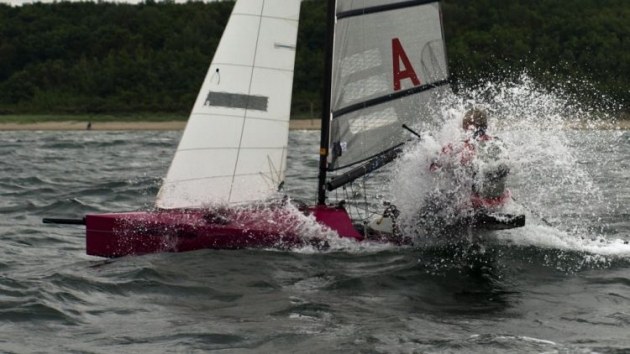
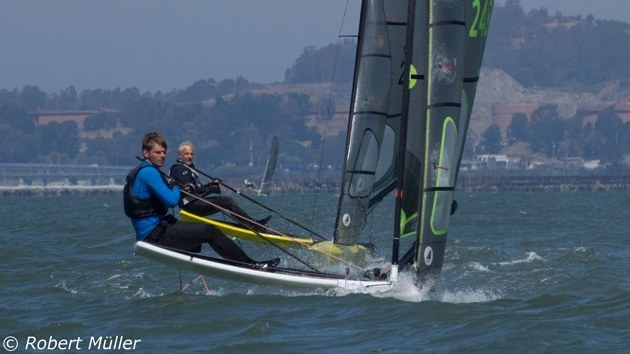
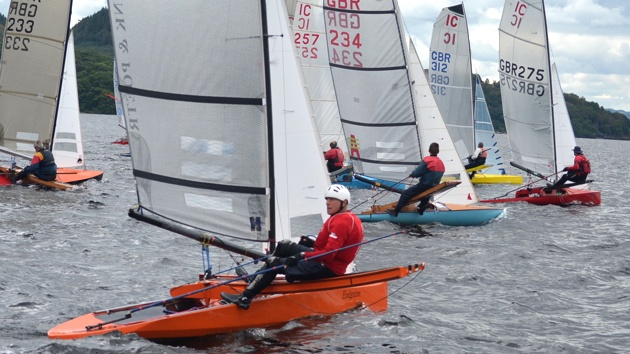

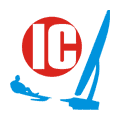


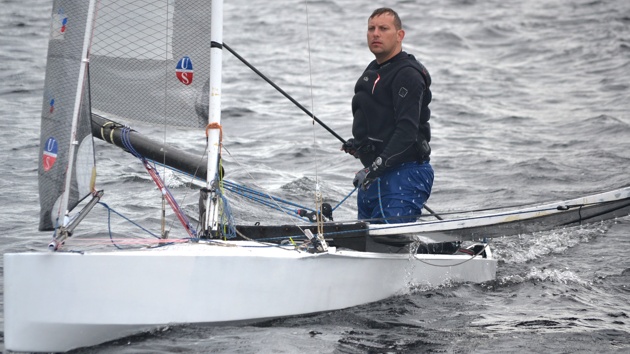
Ulrike_veerkamp.jpg)
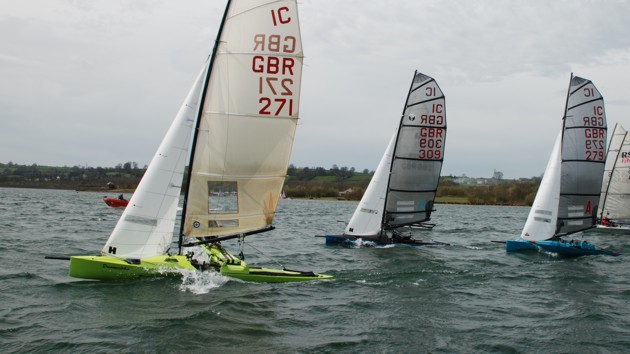
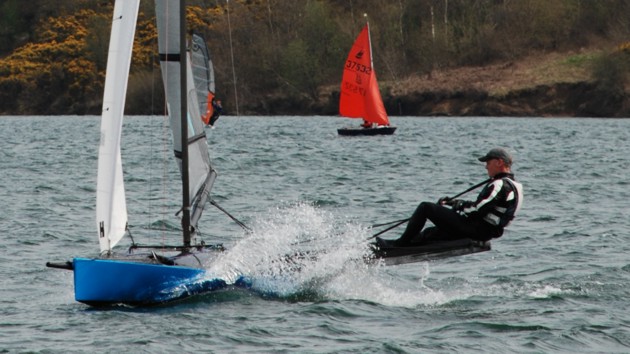
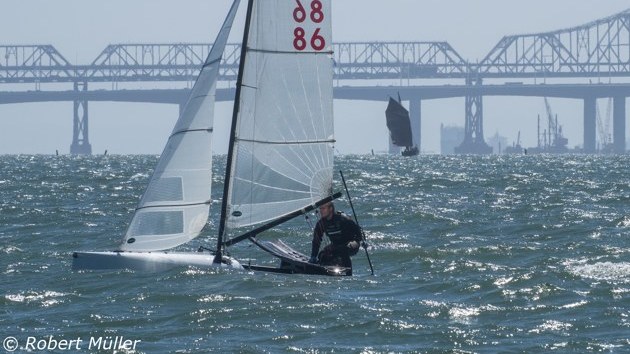
Ulrike_veerkamp.jpg)
Ulrike_veerkamp.jpg)